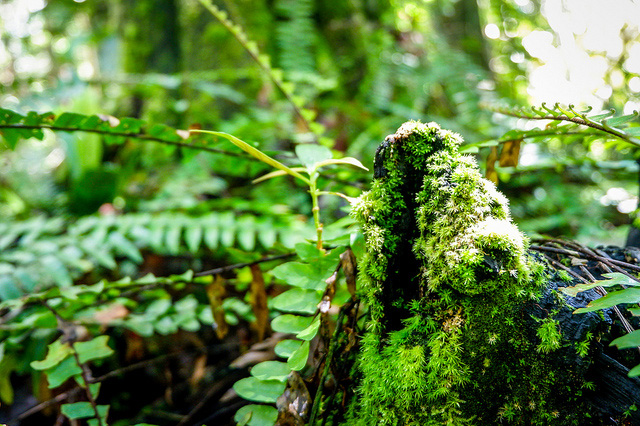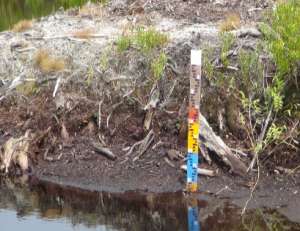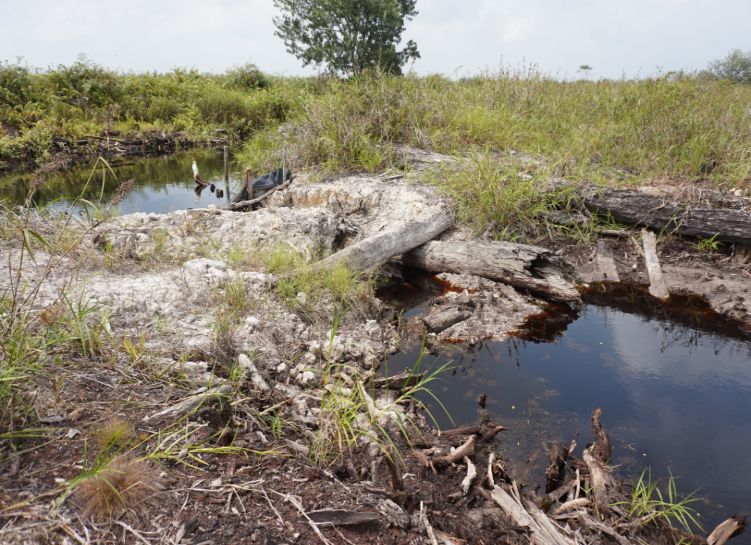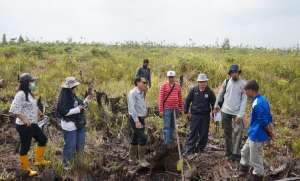
Londerang-Jambi (Friday, 24 August 2018). Corrective action for forest fire. The most important during 10 latest years, forest fire and land fire become a high contributor of emission, particularly in peatland. Efforts to restore degraded lands through planting in various scheme, either for conservation or foods may be a roadway to challenge thus reduce forest fire significantly in 5 years latest. Now and next, it is necessary to think integrated efforts for landscape to meet sustainable green-land. Meet pathway for landscape frame that brings together multiple stakeholders also partners, who collaborate to integrate policy and practice for different land use purposes, with the aims of achieving sustainable landscapes.
According to FAO’s studies, a landscape approach deals with large-scale processes in an integrated and multidisciplinary manner, combining natural resource management with environmental and livelihood considerations. The landscape approach also factors in human activities and their institutions, viewing them as an integral part of the system rather than as external agents. This approach recognizes that the root causes of problems may not be site-specific and that a development agenda requires multi-stakeholder interventions to negotiate and implement actions.
Integrated landscape management is the management of production systems and natural resources in an area large enough to produce vital ecosystem services and small enough to be managed by the people using the land and producing those services. Now, integrated planning for sustainable peatland management and deforestation-free value chains, and best management practices for peatland conservation, restoration, and rehabilitation (rewetting, revegetation, paludiculture, agroforestry, sustainable forest and crop management over peat), including for commercial purposes such as agriculture, oil and gas, logging and energy production for selected lands.
Collective actions to integrate energy. To achieve the purposes, Center of Research and Development for Forest in collaboration with Restoration Peatland Agency, develop series of restoration program to reach out free of fire. Located in Jambi Province, Particularly in West to east Tanjung Jambung to finds some field learning of restoration in practice. On 24 August 2018, integrated team met to observe the achievements of the program, some of which is paludiculture actions.
In term of the program, paludiculture (agriculture and plant cultivation in wet conditions) can be considered a responsible management option for peatland management. Paludiculture produces biomass from wet and rewetted peatlands under conditions that maintain the peat body, sustain ecosystem services and may facilitate carbon accumulation. Besides producing traditional agricultural commodities such as food, feed, fibre and fuel, paludiculture can also generate other raw materials for a variety of purposes, including industrial biochemistry.

The keys of success to restore, the lesson-learnt of the program on site are (1) seedling that able to compete with grass, and also compact media of growth (3) regularly maintaining minimum 3 months, particularly to control bushes, (3) water management, getting wet when dry season and draining water when flooding, thus also the most important is action with thinking landscape, meant, action in sites within thinking upstream and downstream impacts. [@reported by Yayuk Siswiyanti, FOERDIA-MoEF]











